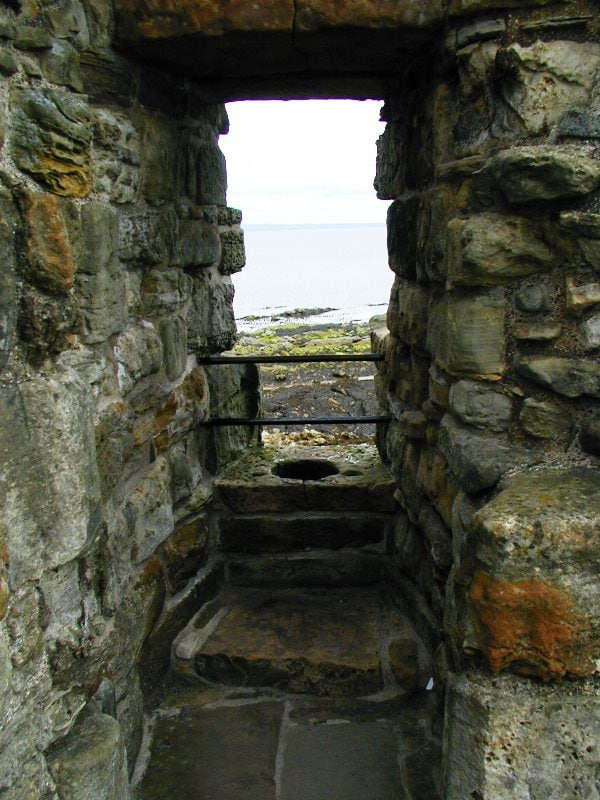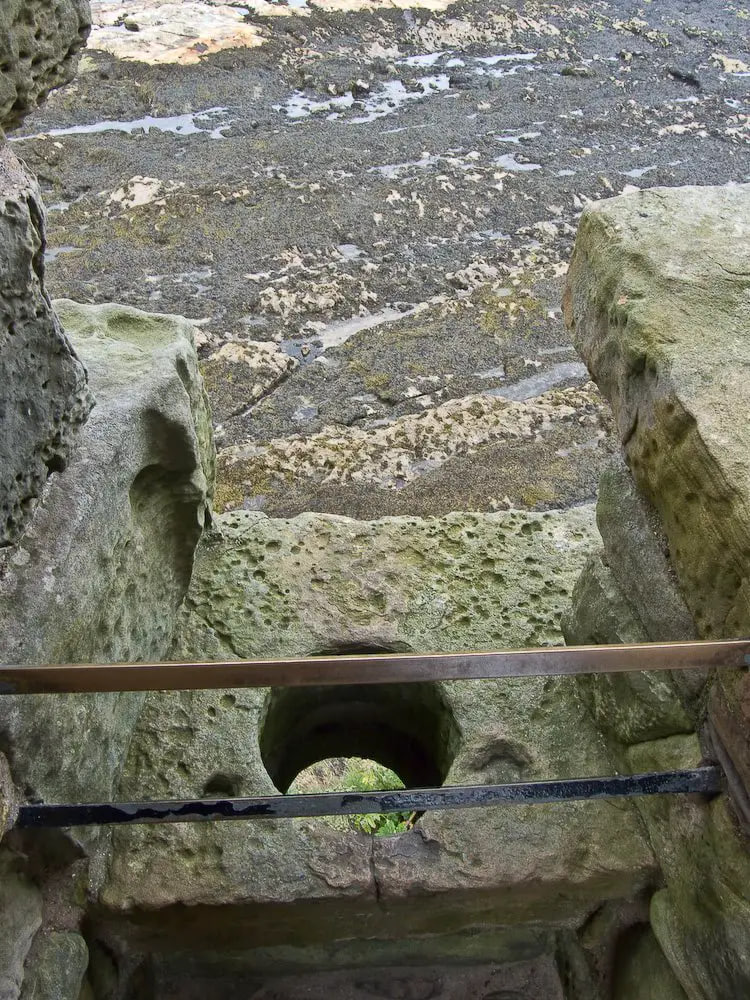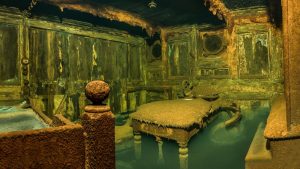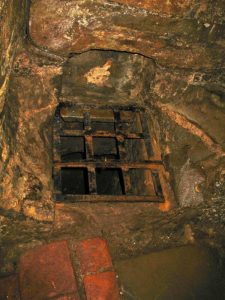A 13th Century AD, toilet at St Andrews Castle, Scotland – emptied directly down the cliff and into the sea :

St Andrews Castle was initially built for Bishops and Archbishops of St Andrews in the 13th Century AD. Since then, it has suffered from sieges, storm damage and bombardments by French ships, so now there isn’t a lot left standing.
‘Garderobe’ a historic term for a room in a medieval castle. A garderobe was often a small, windowless room nestled within the castle’s thick stone walls, and it served as a multi-functional space; to provide castle inhabitants with a convenient place to answer nature’s call.
A medieval garderobe, a simple stone or wooden bench with a strategically placed hole. This crude seating arrangement was designed for practicality rather than comfort. A vertical shaft or chute extended beneath bench, guiding waste downward to a designated area, waste would simply fall into a river or sea where no one had to deal with it, and so some castle toilets were built jutting out over a steep cliff; without that luxury, there had to be someone tending to excrement, removing it, or making sure it was properly mixed with surrounding moat.

In Tudor England, this job was known as a gong farmer, and these unfortunate souls had to work only at night so others couldn’t be put off by their grisly job. Though they were forced to live in isolated homes, they reportedly received decent pay per ton of excrement that they removed. Privacy or Lack Thereof Privacy, as we know it today, was a luxury seldom afforded in medieval times.
Garderobes were often shared among castle inhabitants or located within arm’s reach of living quarters. These structures were sometimes fashioned into the thickness of the walls, creating a sort of “privy closet” accessible from adjacent rooms. Challenge beyond castle walls without luxury of running water, maintaining personal hygiene posed a considerable challenge. Medieval denizens resorted to using whatever was at hand – be it rags, moss, or even hay. The absence of handwashing practices as we know them today further underscores the stark contrast between medieval and contemporary hygiene norms.
The toilet was cleaned either by a simple bucket of water thrown down the shaft or by diverting the wastewater from the kitchen sinks. More rarely, rainwater was diverted from gutters above the latrine which might also be collected into a cistern and then periodically opened to flush the toilet shaft. Despite these refinements, there can be no doubt that a castle toilet stank to high heaven. Indeed, it was not uncommon to hang clothing near garderobes as the pungent ammonia fumes helped to kill mites. Henry III of England famously made mention of the problem of unsavoury odours in a letter to one of his castle constables, ordering a no-expense-spared refit of the amenities of the Tower of London.








